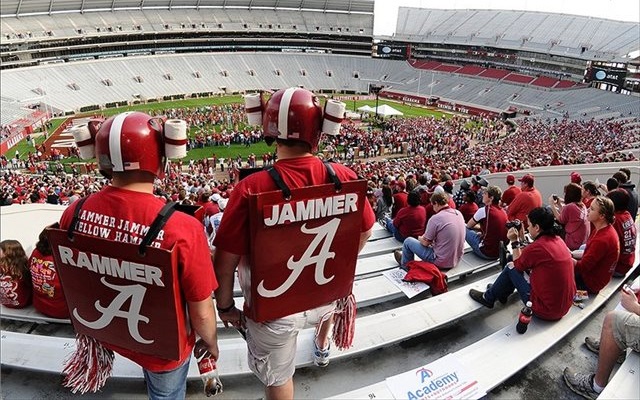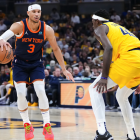
But one thing that's not really up for debate any more: there's no removing the "big money" factor from the equation any more. In this story analyzing the potential impact of the unionization movement, Associated Press reporter Antonio Gonzalez quotes an expert with an eye-opening piece of context for college athletics finances (emphasis added):
"Revenues derived from college athletics is greater than the aggregate revenues of the NBA and the NHL," said Marc Edelman, an associate professor at City University of New York who specializes in sports and antitrust law. He also noted that Alabama's athletic revenues last year, which totaled $143 million, exceeded those of all 30 NHL teams and 25 of the 30 NBA teams.
Texas is the largest athletic department, earning more than $165 million last year in revenue — with $109 million coming from football, according to Education Department data. The university netted $27 million after expenses.
First things first: gross revenue figures from the Department of Education aren't necessarily 100 percent accurate, and public figures for privately-held NBA and NHL franchises might not be 100 percent accurate either.
But it's hard -- bordering on impossible -- to see how a juggernaut like Alabama couldn't generate revenues above and beyond your average NHL team. The Tide sells out its 100,000-seat-plus football stadium several times a year, and sells plenty of basketball and other tickets to boot; it takes in millions upon millions in television receipts every year; it sells and licenses truckloads of merchandise and memorabilia every day of the year; and on top of all of that, like every other major program in the country, it also boasts a cadre of boosters whose largesse boosts the bottom line thanks to the athletic department's sheer existence. In terms of pure gross revenues, it's not hard at all to envision the Carolina Hurricanes or Ottawa Senators struggling to match that.
But here's the catch, at least where the unionization movement is concerned: the NHL's current minimum salary is $550,000. An 85-man football roster is very different from the NHL's 23-man equivalent, quite obviously, and the football roster plus the men's basketball roster plus the baseball roster and women's hoops roster and track roster, etc. is so different that any comparison might be considered useless.
The bottom line, though, is that the NHL's revenues have at least some relationship with the amount of compensation its athletes receive. The revenues at Alabama and across college athletics' power conferences mean better coaches, better facilities, better academics for its athletes, yes ... but the athletes' direct compensation is nonetheless a function of whatever the school charges for tuition and is unreleated to revenue.
Of course, there's no shortage of arguments, good ones, that an athletics scholarship to a place like Alabama represents a fair deal for the athletes all the same. But when the revenues generated by those athletes have grown into the same rough stratosphere as 55 of the 60 professional teams in two of the U.S.'s "Big Four" sports leagues, it's no surprise that the question is about to be settled in serious legal fashion.




















